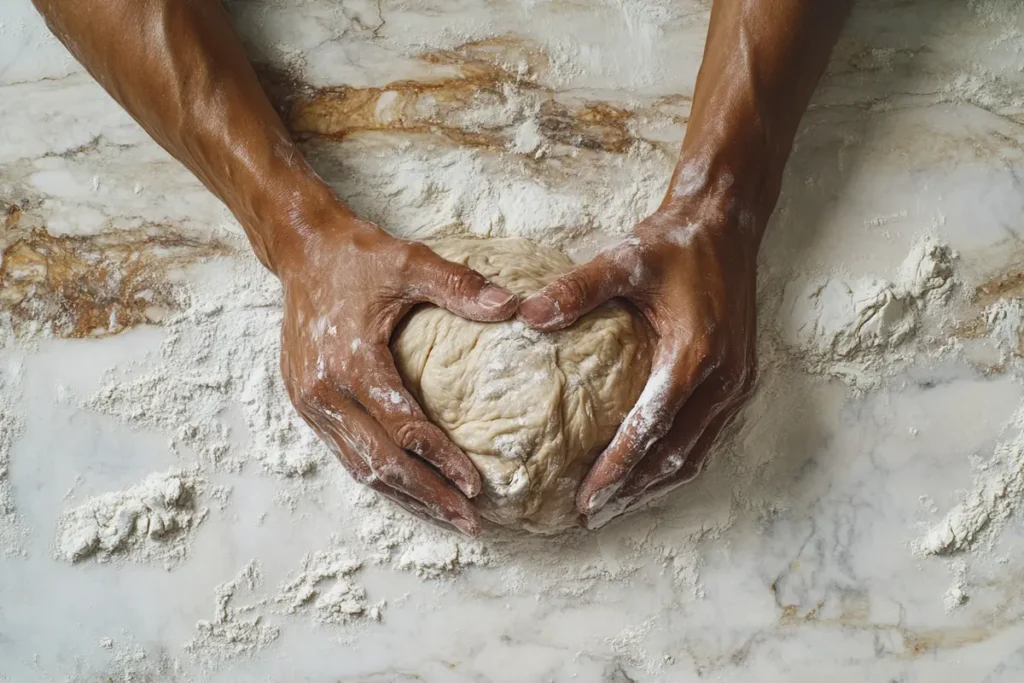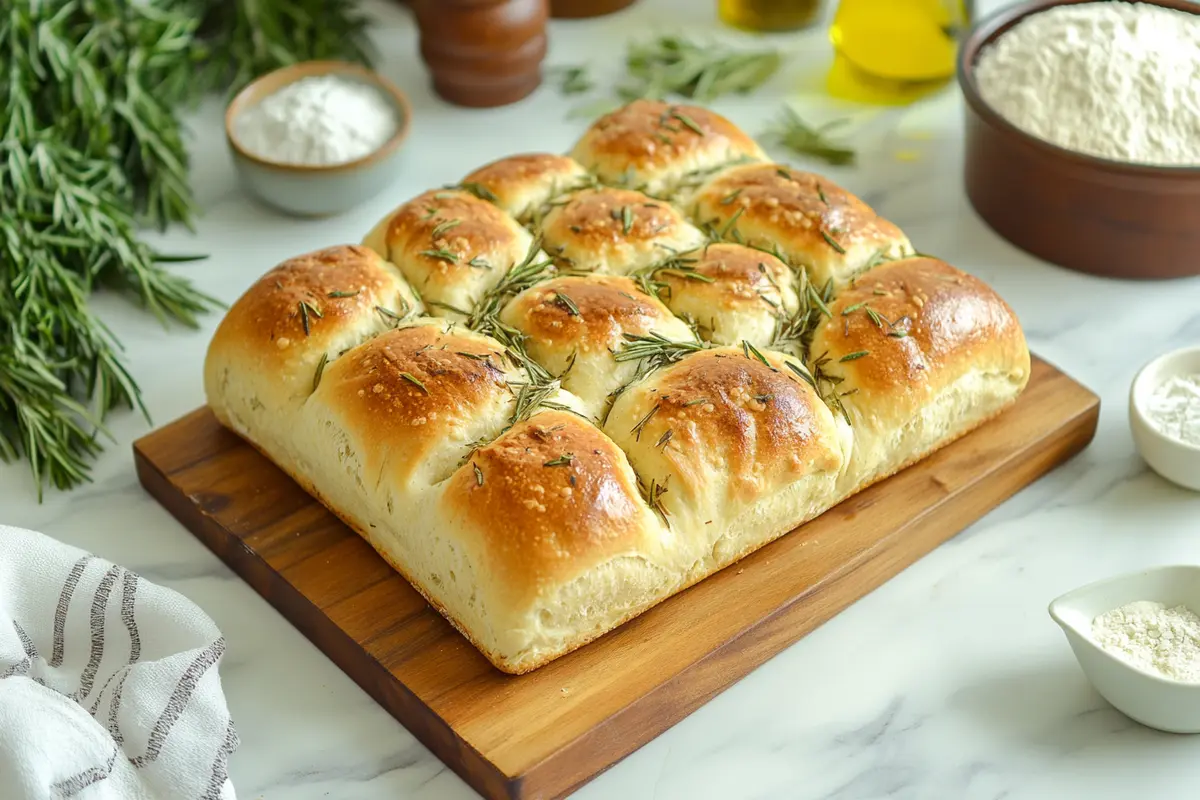Artisan Italian bread is more than just food; it’s a celebration of tradition, craftsmanship, and flavor. Rooted in history, this bread represents the art of baking perfected over centuries in Italian kitchens. But what exactly makes it “artisan”? In this article, we’ll explore the essence of artisan Italian bread—from its origins and key ingredients to the intricate techniques that give it its signature taste and texture. We’ll also delve into its varieties, role in modern cuisine, and how you can try making it at home. Ready to uncover the secrets of this time-honored delicacy? Let’s dive in!
Understanding Artisan Italian Bread
Definition of Artisan Bread
So, what is artisan Italian bread? At its core, artisan bread is handmade using time-honored methods, without relying on mass-production machinery. It’s all about using high-quality ingredients and putting care into each step of the process. Unlike commercial bread, which often contains preservatives and artificial additives, artisan bread focuses on simplicity and authenticity.
Italian artisan bread takes it a step further by blending Italian culinary traditions with local ingredients, creating breads that are as diverse as the regions they come from.
Characteristics of Artisan Italian Bread
Artisan Italian bread is famed for its distinct characteristics. The crust is often golden and crispy, while the inside is soft, airy, and packed with flavor. The fermentation process, often involving sourdough or natural starters, adds a subtle tanginess and depth of taste that you just won’t find in regular bread.
Every loaf is unique—slightly imperfect in shape but perfect in personality. Whether it’s the rich aroma, the chewy texture, or the way it pairs with olive oil and balsamic vinegar, artisan Italian bread is a treat for all senses.
How Artisan Bread Differs from Regular Bread
Unlike store-bought bread, artisan Italian bread isn’t made for long shelf lives. It’s fresh, free of preservatives, and meant to be enjoyed within a day or two. Another key difference? The process. Where commercial bread is rushed through production, artisan bread is given time to rise and develop flavor. This patience results in a bread that’s not just food but a true work of art.
Historical Roots of Artisan Italian Bread
The Origin of Artisan Bread in Italy
To truly answer the question “What is artisan Italian bread?”, we must look back to its origins. Italian breadmaking traces its roots to ancient Rome, where bread was already a staple of daily life. Over centuries, Italian bakers perfected their craft, blending local ingredients and traditional techniques to create breads that reflected the unique character of their regions.
In medieval times, bread ovens became central to communities, and baking evolved into an art form. Italian bread began to take on a rustic charm, with loaves baked in wood-fired ovens and made with simple, natural ingredients.
Role of Traditional Methods in Artisan Baking
Artisan Italian bread is all about keeping those traditional methods alive. From hand-kneading dough to slow fermentation, bakers rely on skills passed down through generations. These techniques ensure every loaf is bursting with flavor and has the perfect crust-to-crumb ratio.
By embracing time-honored practices, Italian bakers avoid shortcuts that compromise quality. The result is bread that stays true to its roots—authentic, wholesome, and incredibly satisfying.
Cultural Significance of Bread in Italian Cuisine
In Italy, bread isn’t just food—it’s a symbol of hospitality and togetherness. Whether paired with olive oil, used to scoop up sauces, or served as part of a Mediterranean diet, bread is an integral part of every meal. Artisan Italian bread carries this cultural importance, embodying the passion and tradition of Italian cuisine.
Key Ingredients of Artisan Italian Bread
High-Quality Flours and Their Impact
The heart of artisan Italian bread lies in its ingredients, starting with the flour. Italian bakers typically use high-quality wheat flours like Type 00 or Type 1, known for their fine texture and ability to create a soft yet sturdy crumb. The type of flour used can vary by region, with some breads featuring whole grains or semolina for added flavor.
Importance of Water and Salt in Breadmaking
Water and salt may seem like simple components, but they play a vital role in defining the flavor and texture of artisan Italian bread. The water binds the flour into a pliable dough, while the salt enhances the natural taste of the ingredients and regulates fermentation. In coastal regions, bakers even use mineral-rich seawater to give their bread a unique character.
Yeast, Sourdough, and Leavening Agents
Leavening is what transforms flat dough into the airy, chewy loaves we love. Many artisan Italian breads rely on natural yeast or sourdough starters, which add a complex flavor profile. This slow-fermentation process creates the tangy notes that are a hallmark of traditional artisan bread. In some regions, bakers also use commercial yeast to achieve specific textures, blending modernity with tradition.
To enhance your culinary journey, you can explore another delightful recipe article like Chocolate Cherry Cake or check out more recipes on their homepage Together Recipes.
Techniques in Artisan Italian Breadmaking
Mixing and Kneading Techniques

The artistry of artisan Italian bread starts with mixing and kneading the dough. Unlike machine-mixed doughs, the hand-mixing process allows bakers to feel the dough’s texture and make adjustments as needed. The kneading develops gluten, which gives bread its signature elasticity. Techniques like stretch-and-fold are often used to gently strengthen the dough without overworking it.
By keeping the process hands-on, bakers ensure each loaf has the perfect balance of structure and softness. This level of care is what makes artisan Italian bread so unique.
Fermentation and Proofing Processes
Fermentation is where the magic happens. During this time, natural yeasts and bacteria work to create complex flavors and the light, airy structure that defines artisan bread. Long, slow fermentation—sometimes lasting over 24 hours—allows the dough to develop its depth of flavor and distinct tangy notes.
Proofing, the final rise before baking, is equally important. Bakers carefully monitor temperature and humidity to achieve the ideal rise, ensuring the bread bakes evenly with a beautiful crumb.
Baking Temperatures and Methods
The baking stage is what transforms humble dough into golden perfection. Artisan Italian bread is often baked in stone or wood-fired ovens, which provide even heat and create the signature crust. High temperatures ensure the bread develops a caramelized crust while retaining moisture inside. Steam is frequently added during the first few minutes to enhance the bread’s appearance and texture.
Types of Artisan Italian Bread
Ciabatta and Its Characteristics
Ciabatta, one of the most popular types of artisan Italian bread, is a staple of Italian bakeries. This bread is known for its open, airy crumb and slightly chewy texture. Made with high-hydration dough, ciabatta pairs perfectly with sandwiches or as a dipping bread for olive oil and balsamic vinegar.
Focaccia: A Versatile Option
Focaccia stands out for its versatility and flavor. This flatbread is often infused with herbs like rosemary or thyme and generously drizzled with olive oil. Its soft, fluffy texture and rich taste make it a favorite for serving alongside soups or salads. Some versions include toppings like olives, tomatoes, or onions, making it a meal in itself.
Pane Toscano and Regional Variations
Pane Toscano, or Tuscan bread, is another notable example of artisan Italian bread. What sets it apart is its lack of salt, a tradition rooted in Tuscany’s history. The result is a mild-tasting bread that complements the region’s robustly flavored dishes, like stews or cured meats.
Other regional variations include Sicilian semolina bread and Altamura bread, each with distinct characteristics tied to their local ingredients and traditions. Each variety highlights the rich diversity of artisan Italian bread across Italy.
The Role of Artisan Bread in Modern Cuisine
Pairing Artisan Bread with Dishes
Artisan Italian bread has found its way into modern kitchens and menus worldwide. Its versatility makes it an ideal companion to a wide range of dishes. Whether served alongside pasta, soups, or roasted vegetables, artisan bread enhances the flavors of every meal. Its crusty texture and soft crumb are perfect for dipping into olive oil, balsamic vinegar, or hearty sauces.
For breakfast, a slice of artisan bread topped with avocado or ricotta transforms into a gourmet delight. Even as a sandwich base, its robust structure holds up beautifully to meats, cheeses, and fresh veggies.
Popularity of Artisan Bread in Global Markets
In today’s world, where consumers increasingly seek healthier, more authentic food options, artisan Italian bread has become a star. With its focus on simple ingredients and traditional methods, it aligns with the growing demand for sustainable and natural foods. Bakeries and restaurants now offer a variety of artisan breads, bringing a taste of Italy to tables everywhere.
But why stop at the bakery? Many home cooks have started exploring what is artisan Italian bread by baking it themselves, inspired by its growing popularity and cultural significance.
Artisan Breadmaking at Home
Essential Equipment for Home Bakers
If you’re inspired to make artisan Italian bread at home, having the right tools is key. A baking stone or steel is essential for creating that iconic crust, while a proofing basket helps shape the dough during fermentation. A digital scale ensures precision when measuring ingredients—critical for breadmaking success.
Simplified Recipes for Beginners
Making artisan Italian bread may sound intimidating, but with a bit of patience, anyone can do it! Start with a simple recipe like ciabatta or focaccia. These breads require only a few ingredients—flour, water, salt, and yeast or sourdough starter. Knead the dough, let it ferment, and bake it in a hot oven. Before you know it, your kitchen will be filled with the heavenly aroma of fresh bread.
Common Mistakes and How to Avoid Them
Home bakers often face challenges, but they’re easy to overcome with a few tips. One common mistake is rushing the fermentation process—artisan bread needs time to develop its flavor. Another is using too much flour when shaping the dough, which can result in a dense texture. To succeed, follow recipes closely, trust the process, and enjoy learning along the way.
FAQs About Artisan Italian Bread
What Makes Artisan Bread Unique?
A common question is, “What is artisan Italian bread, and how is it different from regular bread?” The uniqueness lies in its handmade nature, simple ingredients, and traditional techniques. Unlike mass-produced bread, artisan loaves are free of artificial additives and preservatives, making them fresher and more flavorful. Additionally, the slow fermentation process gives artisan bread its signature tangy flavor and airy crumb.
Can You Freeze Artisan Bread?
Yes, you can freeze artisan Italian bread to extend its shelf life. Wrap it tightly in plastic or aluminum foil and place it in a freezer-safe bag. When you’re ready to enjoy it, thaw it at room temperature and reheat it in the oven for a fresh-from-the-bakery taste. Freezing works best with crusty breads like ciabatta or pane Toscano.
Can You Freeze Artisan Bread?
Yes, you can freeze artisan Italian bread to extend its shelf life. Wrap it tightly in plastic or aluminum foil and place it in a freezer-safe bag. When you’re ready to enjoy it, thaw it at room temperature and reheat it in the oven for a fresh-from-the-bakery taste. Freezing works best with crusty breads like ciabatta or pane Toscano.
How Long Does Artisan Bread Last?
Freshly baked artisan Italian bread is best enjoyed within two to three days. Because it lacks preservatives, it won’t last as long as store-bought bread. To keep it fresh, store it in a paper bag at room temperature and avoid sealing it in plastic, which can make the crust soggy.
What’s the Best Way to Serve Artisan Bread?
Artisan Italian bread shines when served simply. Pair it with olive oil, cheese, or cured meats for a classic Italian appetizer. It’s also perfect for sandwiches, soups, and salads, adding a rustic touch to any meal.

